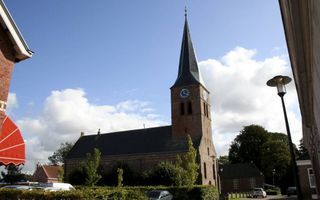Christian Nationalism and the Dutch Reformed Church

7 June 2023
By Dr. Adi Schlebusch
The Dutch Republic was birthed out of the Union of Utrecht in 1581, in which the Northern provinces of the Netherlands under the leadership of prince William of Orange (1533—1584) formed a military alliance to defend their national sovereignty against Spain. The nationalism which consequently developed in these northern provinces had a distinctly Protestant and Reformed character.1
The Eighty-years' war against Spain (1568—1648) decidedly shaped the Dutch Reformed Church in a nationalist way. The seven Dutch provinces who signed the Union of Utrecht, while being granted autonomy, had each established their local Reformed Church as public church, with the Union becoming the de facto constiutional law of the decentralized Dutch Republic.2
The Dutch Reformed Church and the Dutch nation therefore simultaneously arose out of the same historical struggle for liberty, and Dutch Christian Nationalism became synonymous with the Dutch Reformed faith to such an extent that by the end of the seventeenth-century the great Dutch scholastic theologian Hermann Witsius (1636—1708) expressely referred to the Dutch nation as "God's people ... chosen from the nations to be his particular portion, and from whom He expects more than from other nations."3
Later, during the nineteenth-century when theological liberalism infiltrated the Dutch Reformed Church and many conservatives opted to leave that denomination, Dutch Reformed nationalists like Guillaume Groen van Prinsterer (1801—1876) and P.J. Hoedemaker (1839—1910) decided to stay in that denomination because of their commitment to the national establishment principle. For Groen van Prinsterer, the Dutch Reformed Church forms one of the essential pillars of Dutch nationhood:
The Reformed Church is in a very historically unique way, the heart of a united Netherlands ... here the state is unified to the church in the sense that the latter's confession functions as standard for the former ... [In other words] God's Word, understood in terms of the confessional standards of the Reformed Church, functions as the constitution of the government and of the nation.4
Likewise Hoedemaker argues that the Dutch Reformed Church has been providentially tied to the Dutch people's covenanted nationhood. Over against his opponents, who argued that "in the New Testament there is no national church as was the case in ancient Israel, but rather a church consisting of believers from every nation and tribe and language," Hoedemaker maintains:
The Church must be or strive to be national ... In what way is the church in the New Covenant distinct from that of the Old? Surely not that the catholic church referred to here must not manifest nationally.5
The rise of Neo-Calvinism and its embrace of pluralism resulted in the nationalist church ideal falling out of favor in the 20th century, but it has been revived in the rise of the Restored Reformed Church (Hersteld Hervormde Kerk) in the Netherlands—a denomination founded in 2004 and with just over 60 000 members. This figure includes only the active, baptized membership of this church, but the Restored Reformed Churches recognizes all those descended from Dutch ancestors to be born into the national covenant and as such constituting a kind of "church membership by birth" even if they haven't been baptized.6 The church is accordingly not seen as a free association, but a fundamentally covenantal institution which is called to re-Christianize and serve the Dutch nation through the preaching of the Word and administration of the Sacraments.
In the Restored Reformed Church, therefore, membership of the Dutch nation continues to be viewed as intrinsically tied to covenantal membership of the national church. The national church, as a visible manifestation of the universal church, therefore also has a unique calling towards the nation it sees itself as providentally ordained to serve.
1. Kohn, H. 1944. The Idea of Nationalism: A study in its Origins and Background. London: Macmillan Company, p. 602.
2. Van der Steen, J. 2015. Memory Wars in the Low Countries, 1566—1700. Leiden: Brill, p. 149.
3. Witsius, H. 1692. Twist des Heeren met sijn wyngaert. Utrecht: Balthasar Lobe, p. 387—388.
4. Groen van Prinsterer, G. 1841. Handboek der Geschiedenis van het Vaderland: Eerste Aflevering. Leiden: Luchtmans, p. 87—88.
5. Hoedemaker, P.J. 1889. Een andere toon. Nijland: Nationaal Bibliotheek, p. 2—3.
6. Beleidsplan Hersteld Hervormde Gemeente Middelharnis-Sommelsdijk. April 2016, p. 7—8.